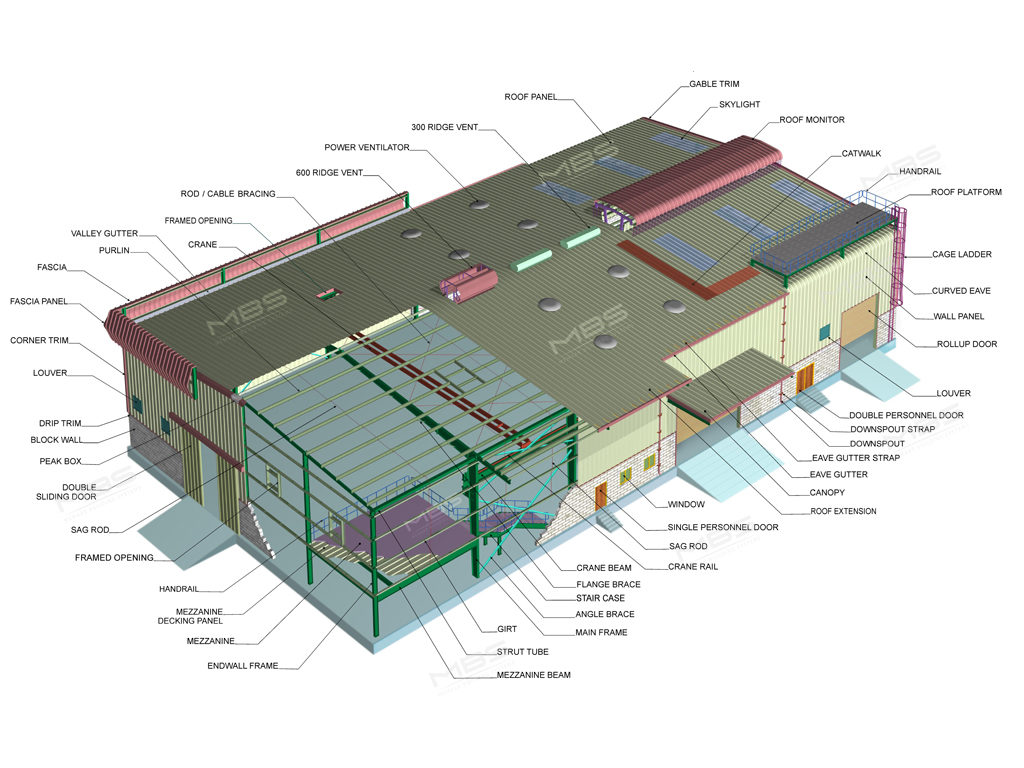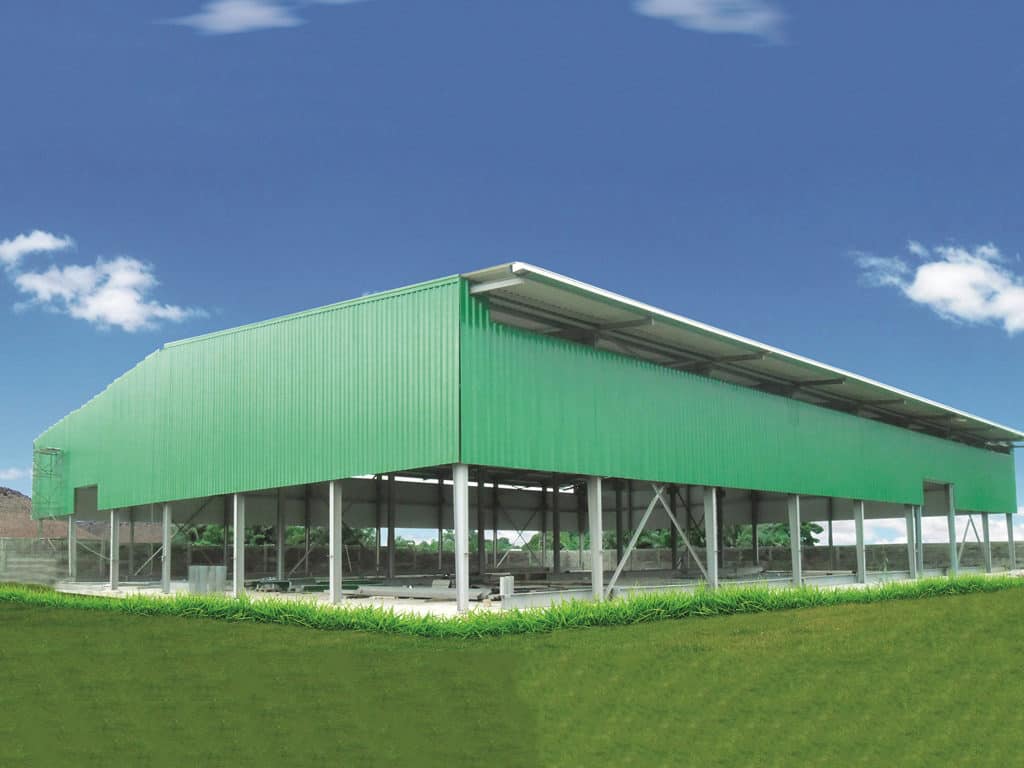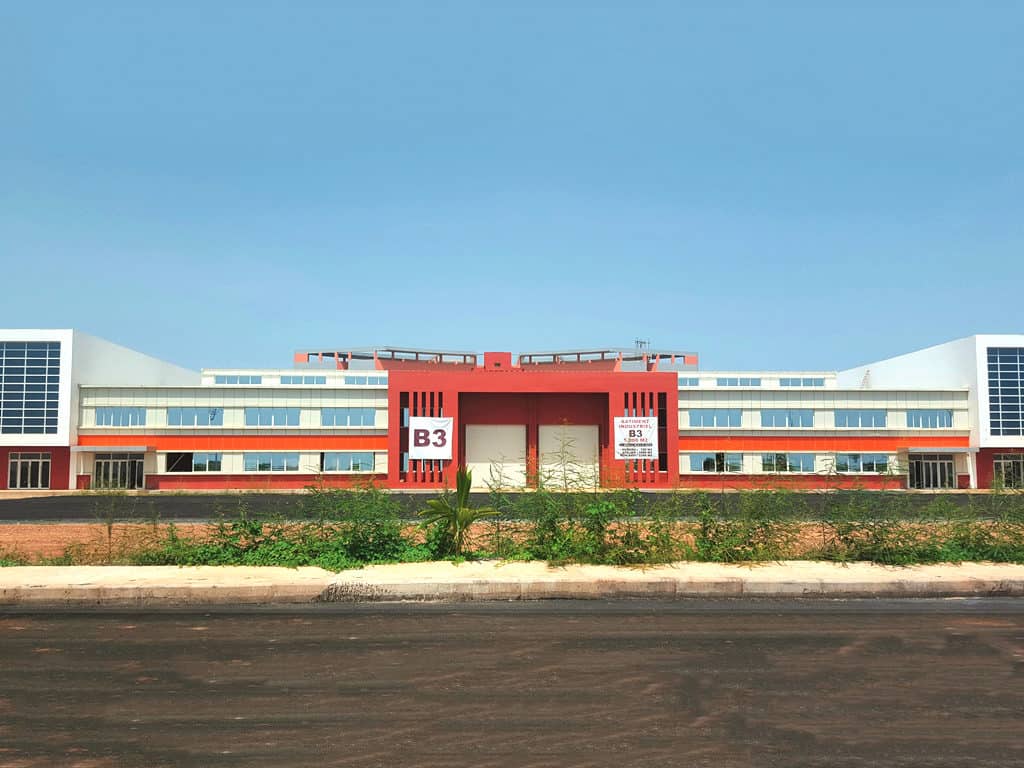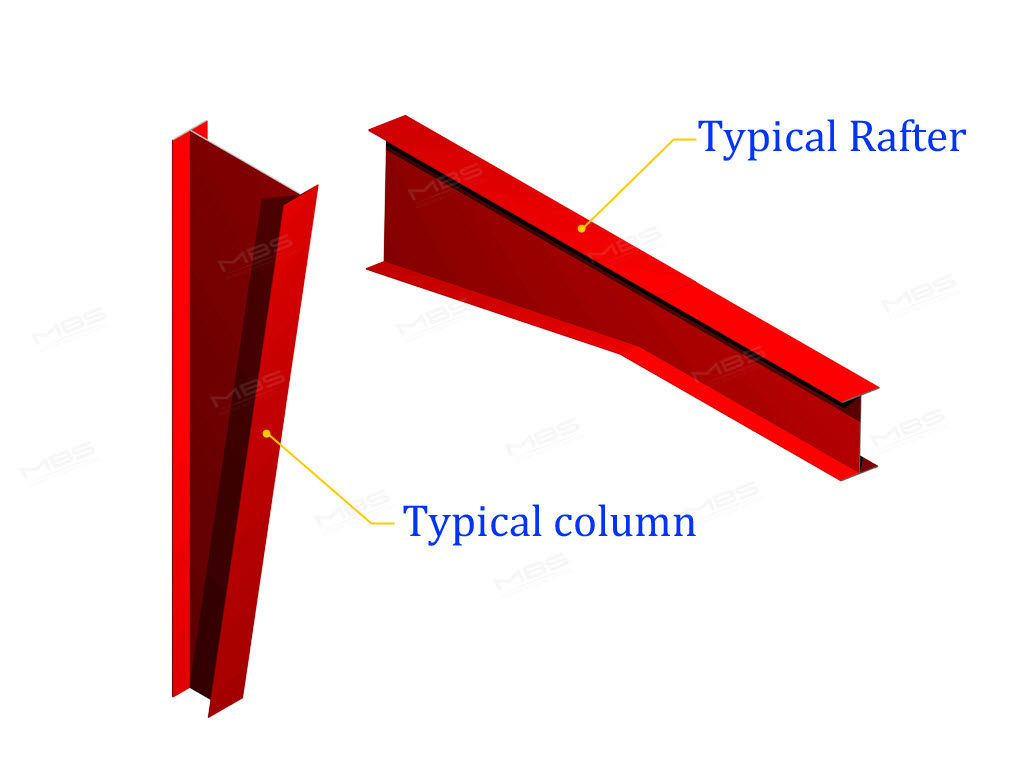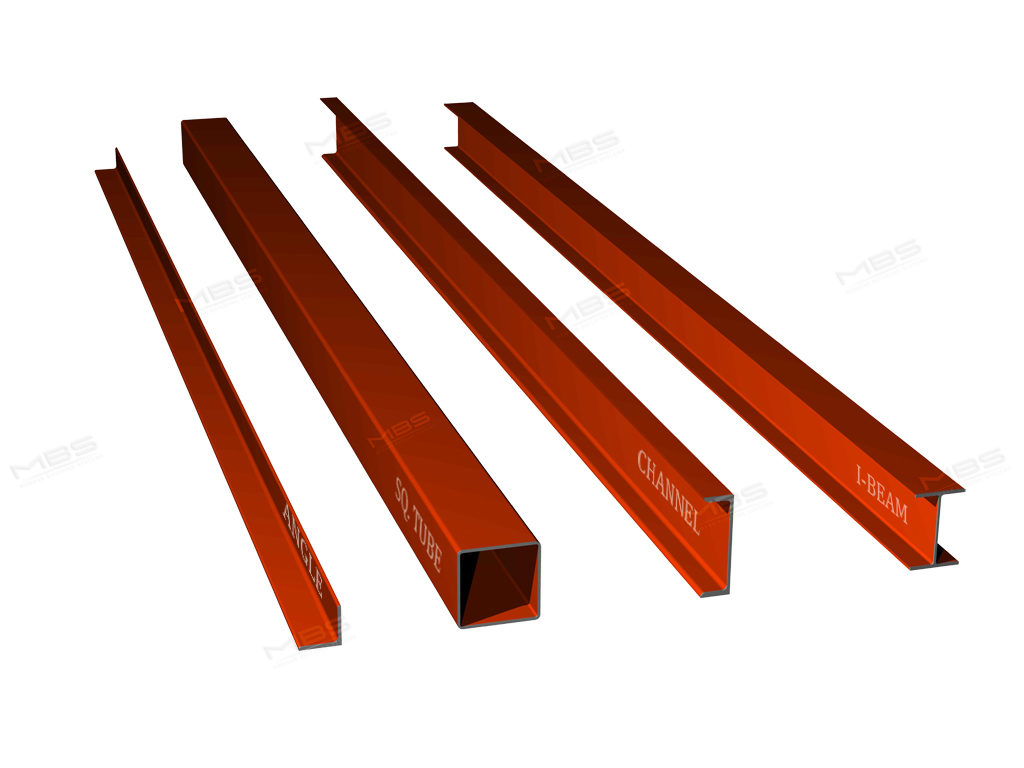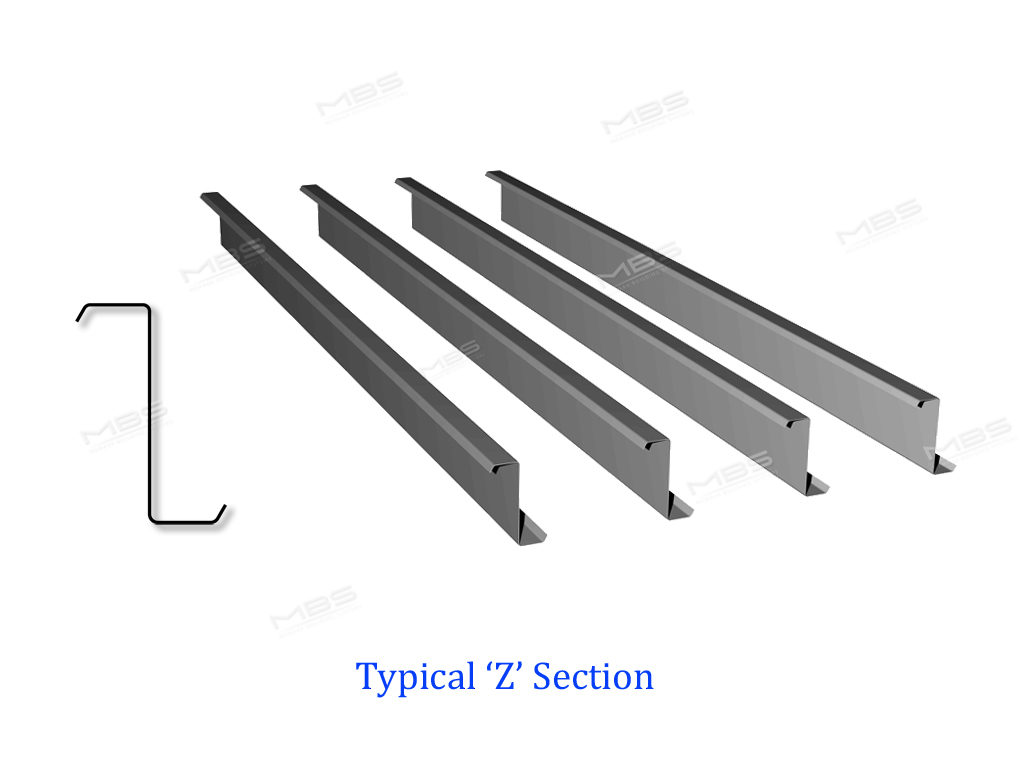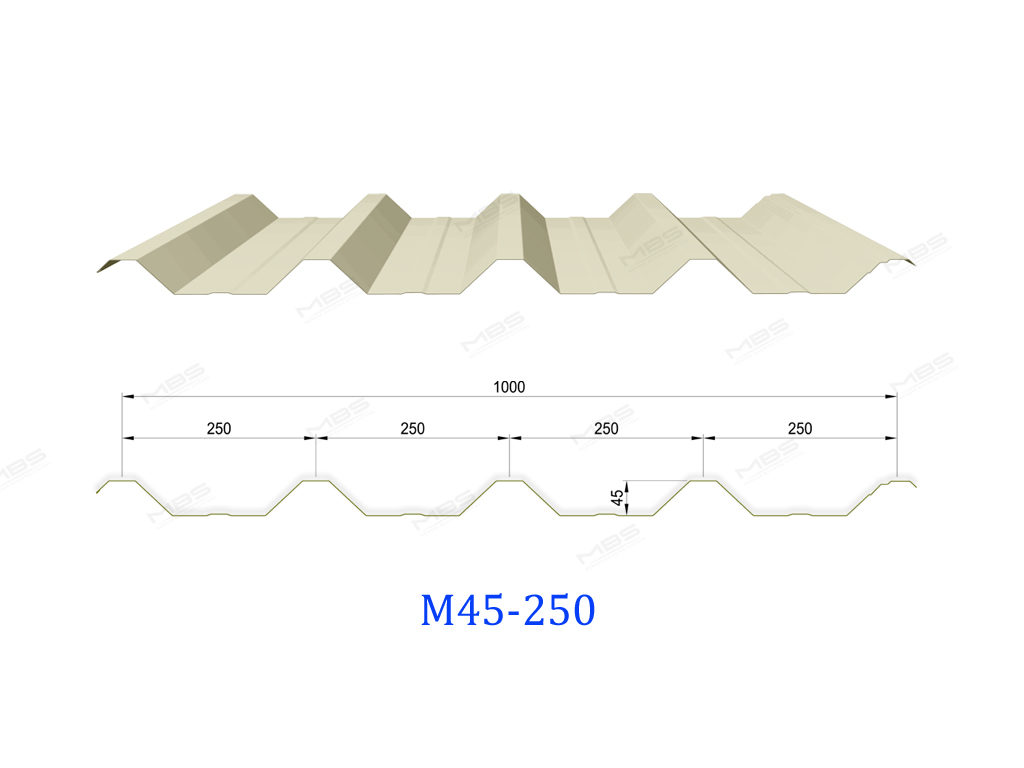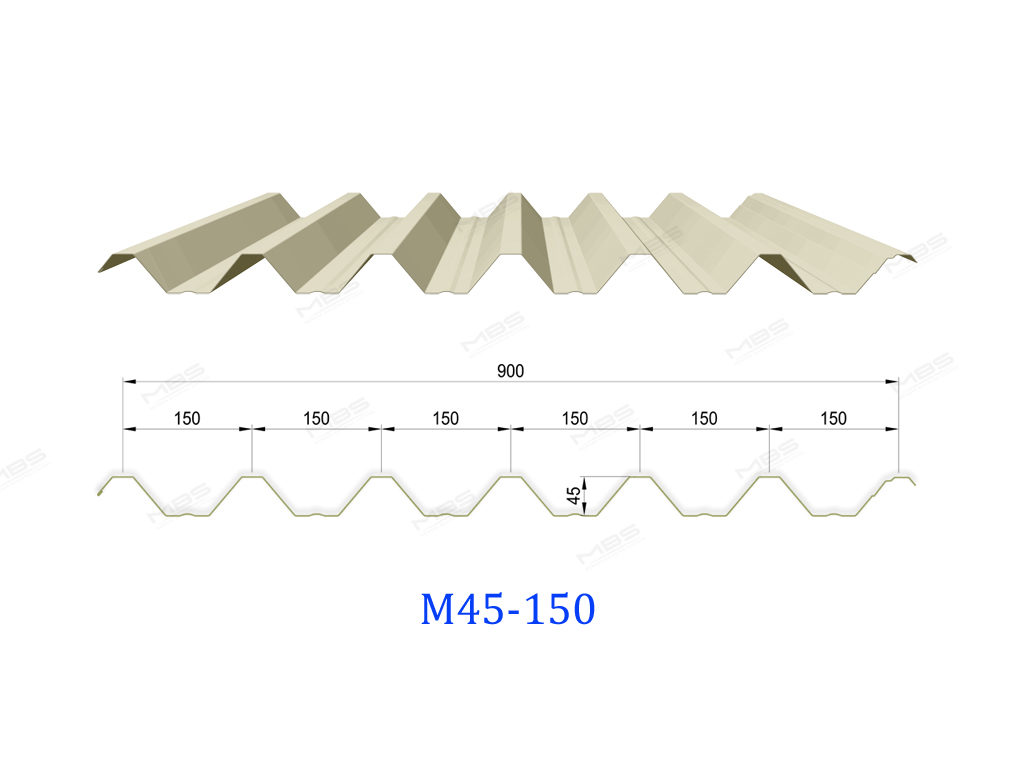Pre Engineered Steel Buildings (PEB)
The PEB (Pre-Engineered Building) concept or the Metal Building System was first developed in the USA after World War II, as one of the solutions for the increasing demand of fast economic growth, and then transferred the concept to other industrialized countries. The Metal Building System consists of a complete steel frame building system, with pre-designed components to best suit the unique customer requirements.
The final product is a complete building shell with sub structural systems including mezzanine floors, crane systems, canopies, fascia and interior partitions.
The PEB system offers multiple advantages to the end-user; the most notable are low initial investment, fast construction time, low maintenance cost, large clear spans, infinite choice of layouts, inherent resistance to earthquakes, ease of expansion and unique attractive appearance.
The PEB system is a standard in commercial and industrial market segments for warehouses, distribution centers, and industrial facilities, and is continuing to make greater inroads into the low-rise sophisticated building market, commercial office buildings and mixed-use facilities. Institutional and governmental construction are some of the areas where PEB systems are being used more.
These buildings are increasingly recognized as reliable, aesthetically pleasing, energy efficient and cost-effective alternatives. The sustainable attributes of metal building systems with their recycled content and recycle-ability makes them a natural choice for today’s building owners.
Defining a PEB Building:
Pre-engineered should not be confused with pre-fabricated. The name Pre-engineered building was adopted for the following reasons:
- Pre-set methods for connecting and welding (standardized connections).
- Utilization of pre-determined stock sizes.
- Optimized design, detailing and fabrication, resulting in most economical (lower weight) and fast delivery (reduced engineering time and fabrication time). For more information refer www.mbma.com
Primary members are the main structural members of a PEB building.
Built Up – These are made up of 3 hot rolled plates of equal or varying thicknesses welded together to form an I-Section. MBS uses high grade steel plates conforming to ASTM A572M Grade 345 Type 1 (Minimum Yield Strength is 345 N/mm²).
The advantage of using a built-up section as compared to a hot rolled profile section is that the built-up section can be profiled into a tapered member that accurately adheres to the stress concentration in a building. The flexibility of having different thicknesses for top and bottom flange adds to the advantage and makes built-up sections more economical compared to hot rolled profiles. The built-up sections are factory painted with a minimum of 50 microns (DFT) of red or gray oxide primer as our standard or any other paint system as per customer choice.
Hot Rolled – These are the general hot-rolled profiled sections available in the steel market conforming to various international standards.
MBS applies minimum hot rolled sections for use as end wall columns, fascia posts, brackets, canopy framing, crane cap channels, stair stringers, strut tubes, mezzanine columns and angle bracing. The grade conforms as given below for different profiles.
| I-Section | EN 10025 S355 JR (Minimum Yield Strength is 345 N/mm²) |
| Square Tube | ASTM A 500 Grade B (Minimum Yield Strength is 317 N/mm²) |
| Channel | EN 10025 S355 JR (Minimum Yield Strength is 345 N/mm²) |
| Angle | ASTM A572M Grade 345 (Minimum Yield Strength is 345 N/mm²) |
Secondary Members
Purlins, Girts, Eave Struts, Base Angles, and gable angles are cold formed from galvanized steel coils conforming to ASTM A653M Grade SS 340 Class 1 or equivalent and ranging in thickness from 1.5mm to 2.5mm.
Single Skin Profile
Metal panels (for sheeting) are one of the most attractive features of a metal building system. The term panel refers to the metal sheets used for roof and wall, interior roof and wall liners, partition panels, fascia panels, and soffit panels.
The single skin profiled sheet is ideal for agricultural, commercial and industrial buildings. These profiles are available with design flexibility to suit your design requirements and also can be used as wall and roof panels. The profiles are available in 2 different types M45-250 and M45-150, and are either steel or aluminum.
- Steel panels: standard stocked steel panels conform to ASTM A792, Grade 340 Class I. The protective steel coating shall be an aluminum zinc alloy comprised of 55% aluminum and 45% zinc, weighing 150 grams/m², applied on both sides. The aluminum zinc alloy coating offers roughly 4 times more corrosion resistance compared to the galvanized alternative.
- Aluminum panels: standard stocked aluminum panels are made from alloy AA3105, temper H46 for mill finish and for pre-painted panels. Pre-painted aluminum comes with a 5 micron primer paint and 18+ micron polyester paint applied at the mill on the exterior face. The polyester paint is made of a polymer that is equal or superior to silicon polyester.
